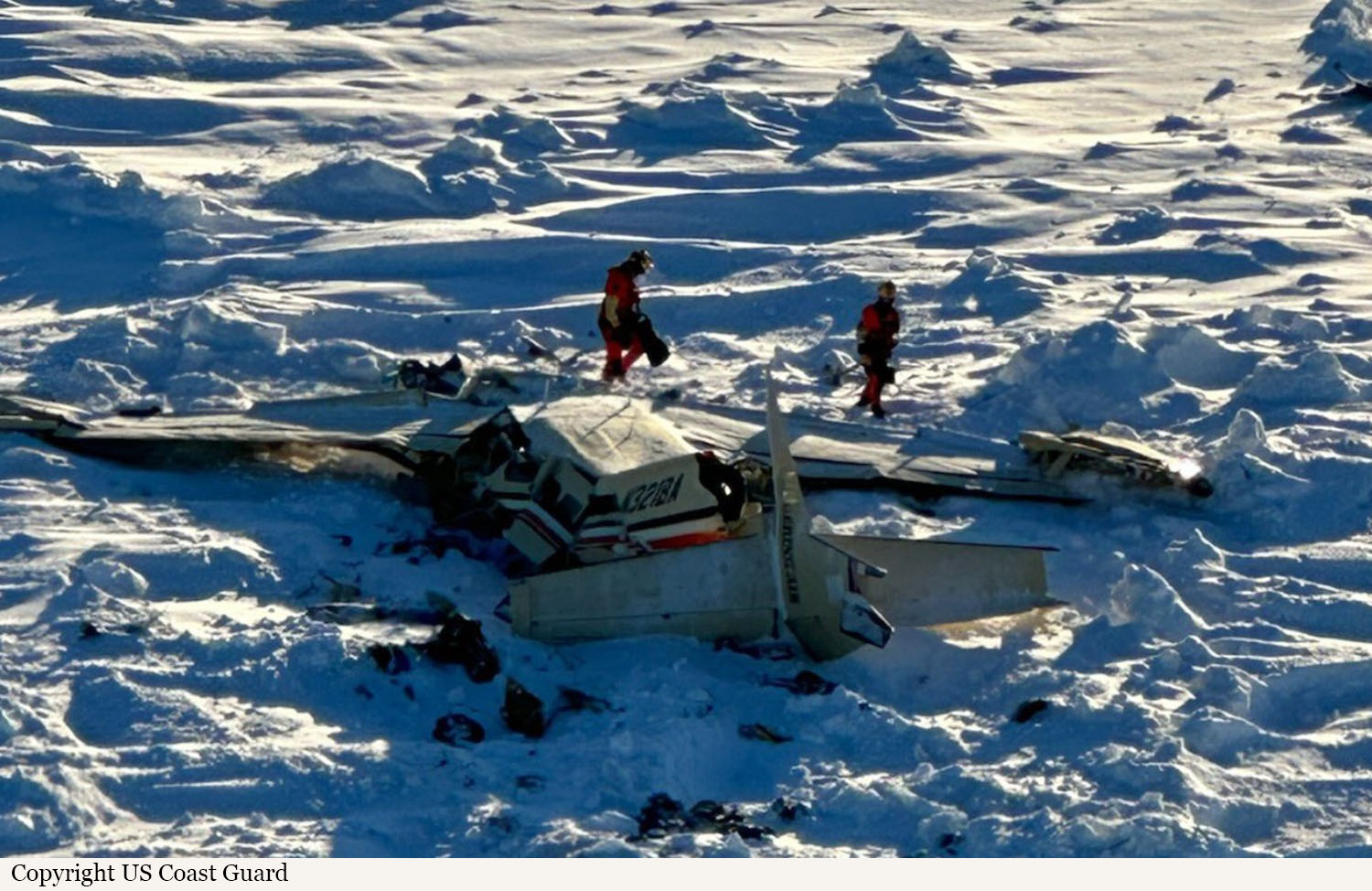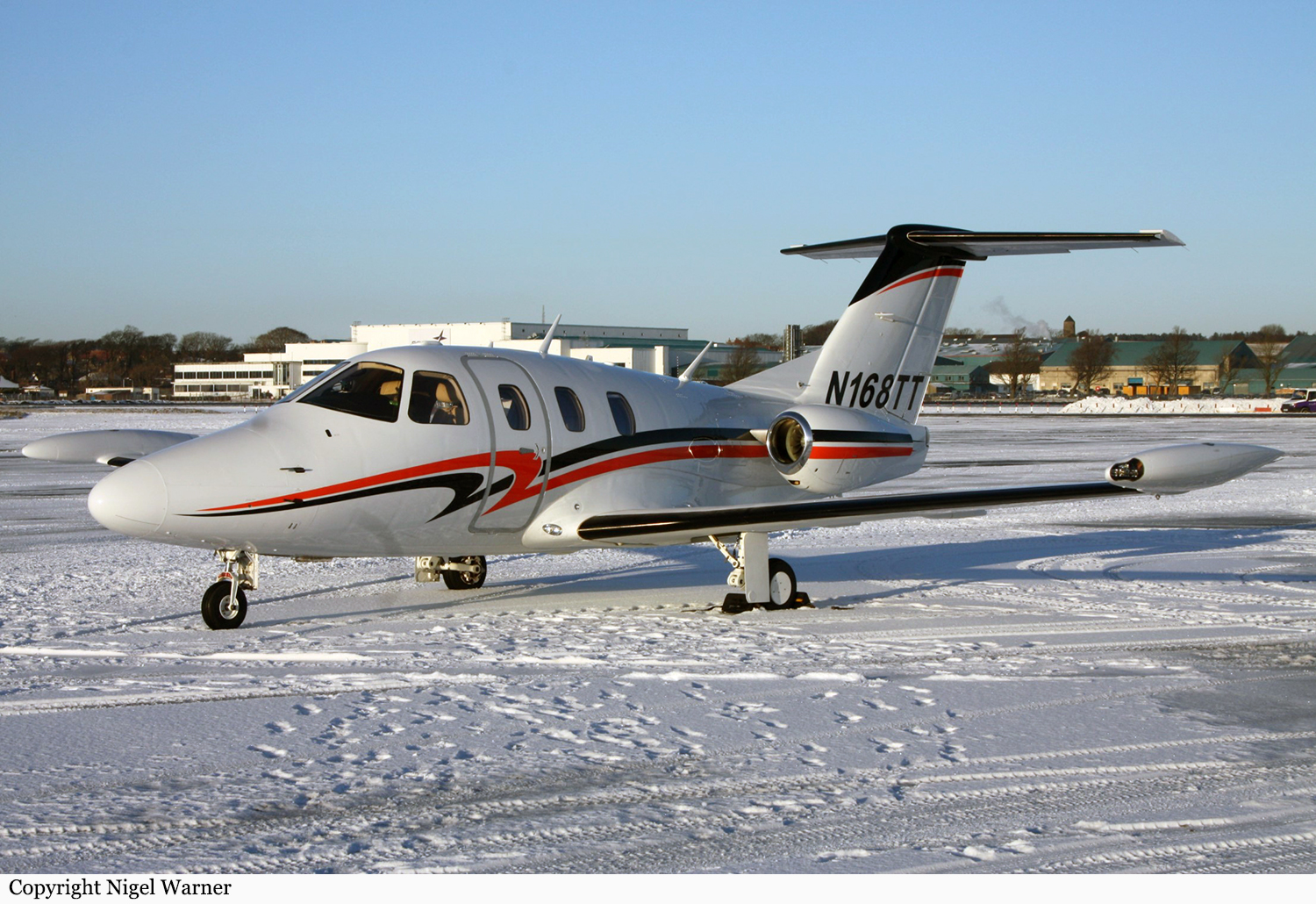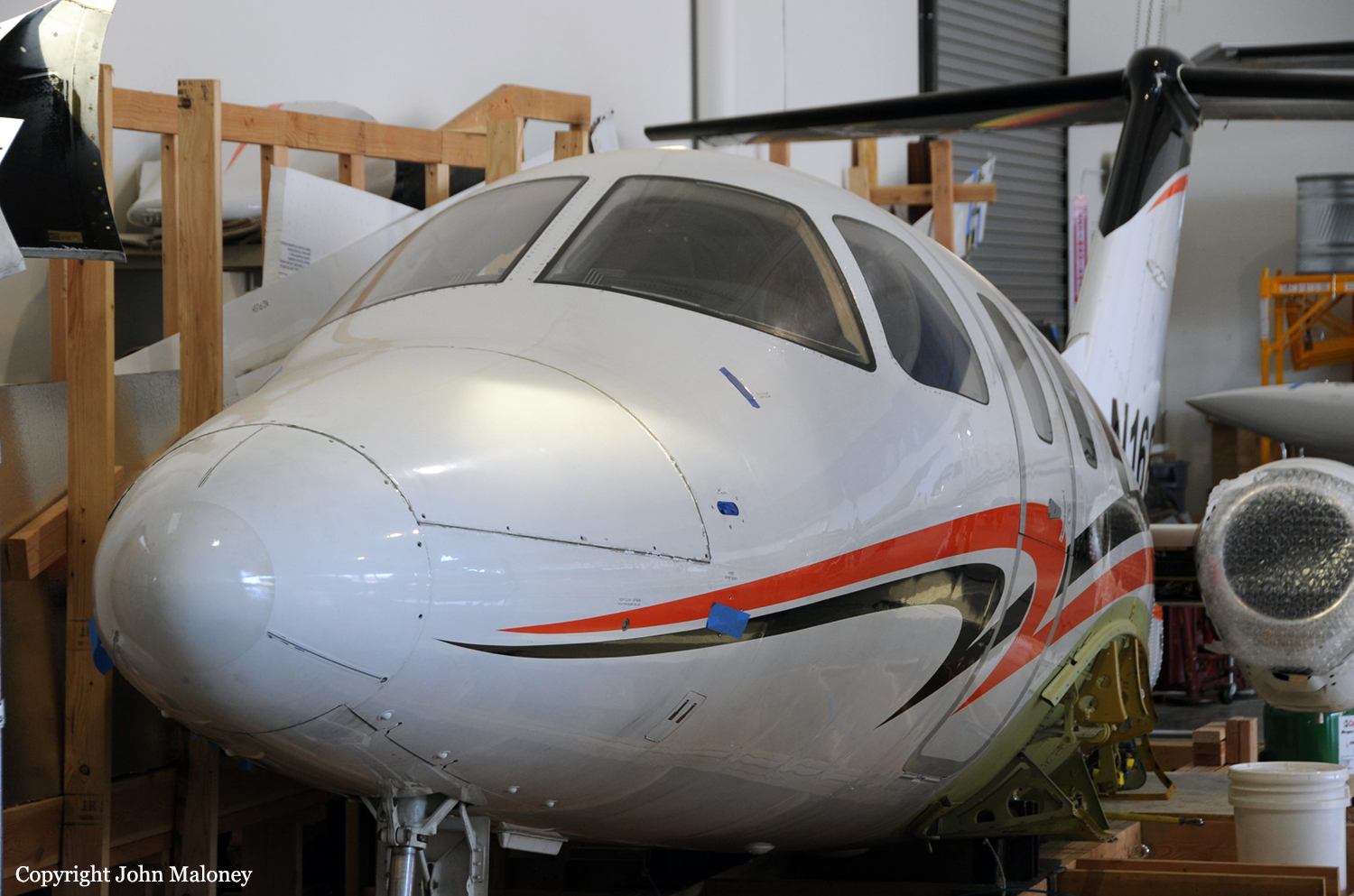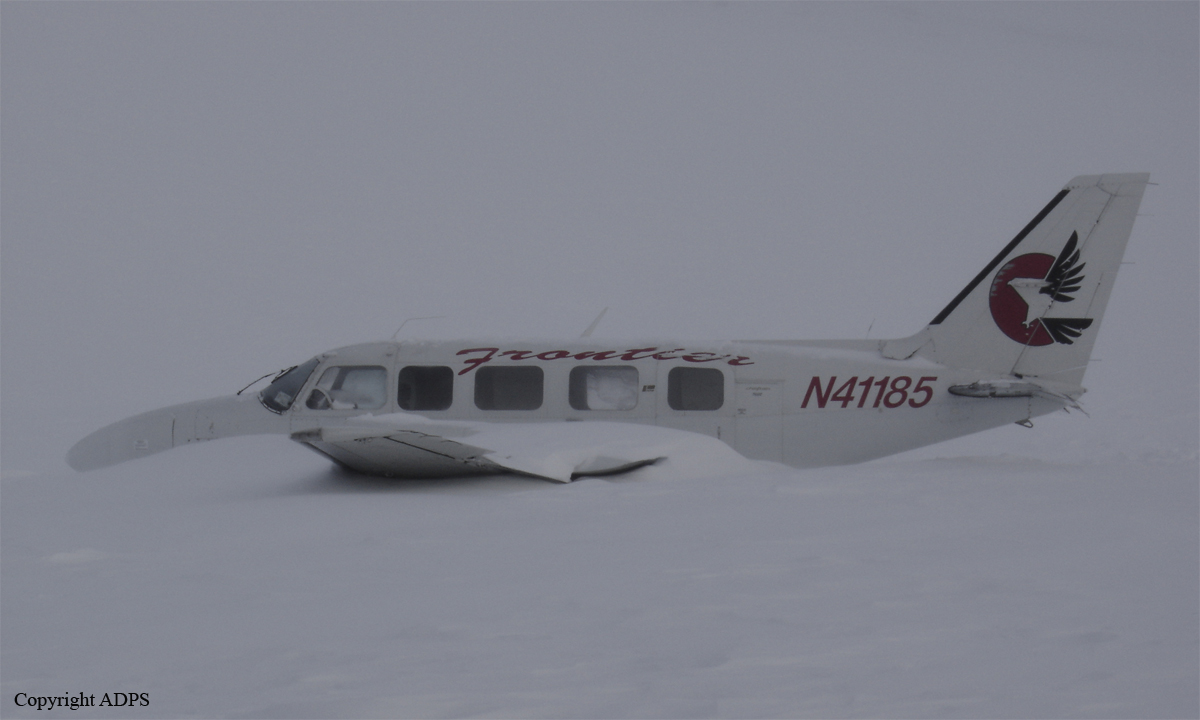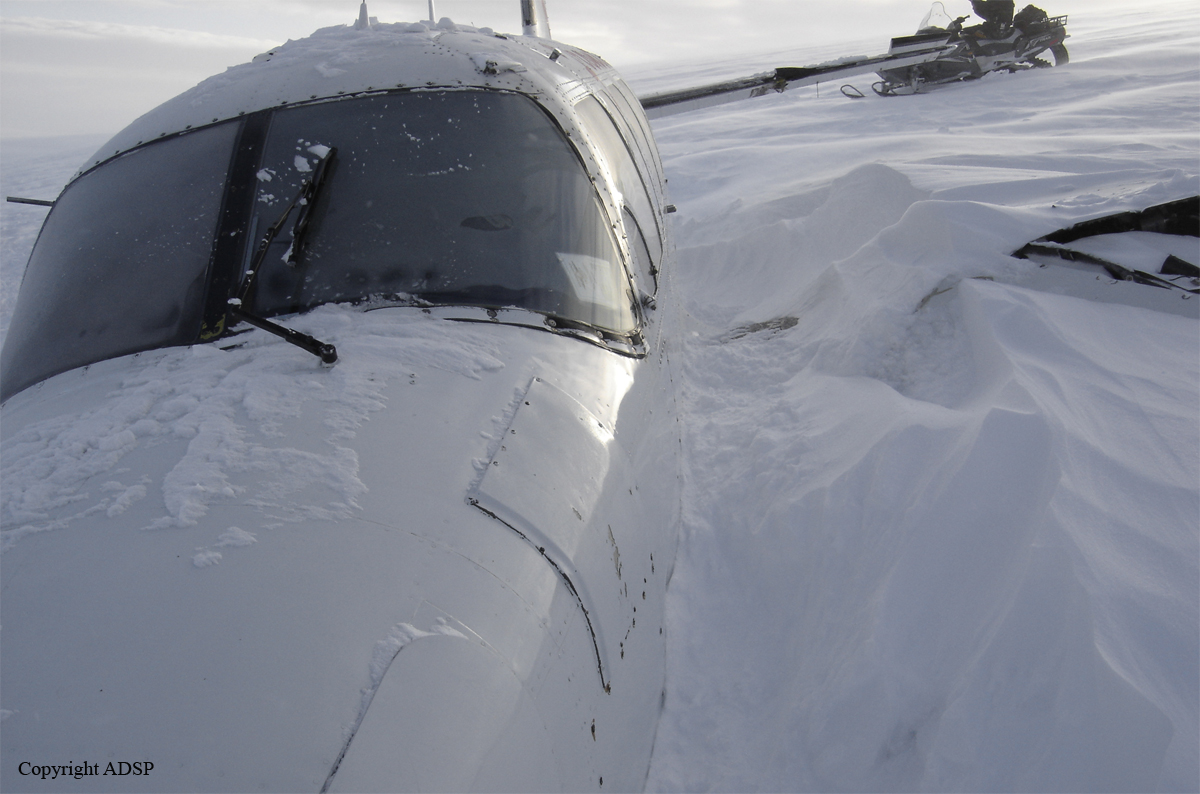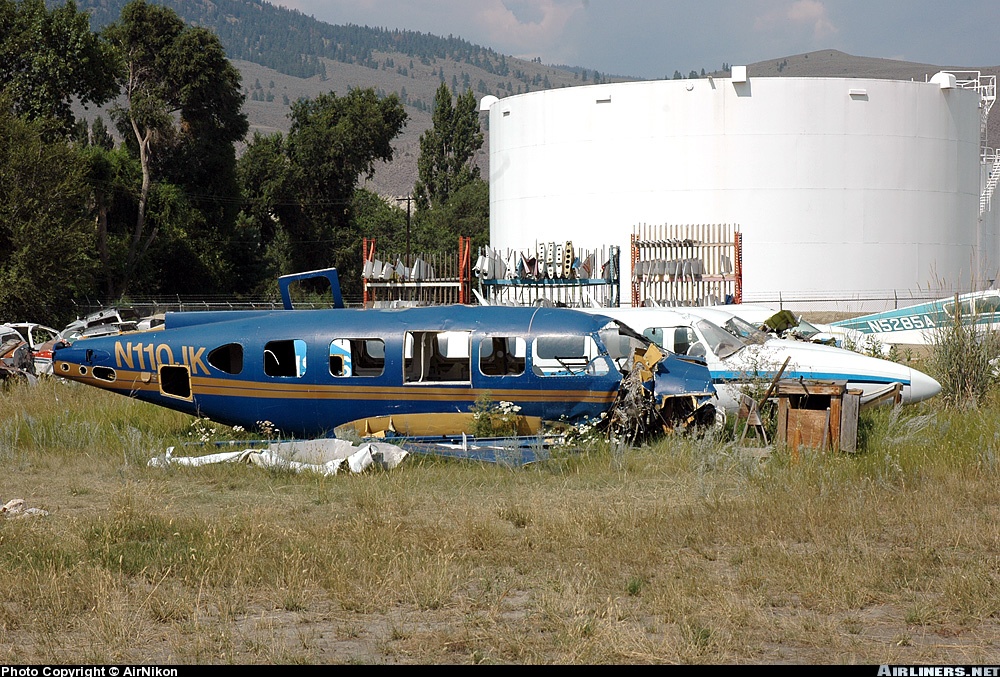Crash of a Cessna 208B Grand Caravan EX into the Norton Sound: 10 killed
Date & Time:
Feb 6, 2025 at 1516 LT
Registration:
N321BA
Survivors:
No
Schedule:
Unalakleet - Nome
MSN:
208B-5613
YOM:
2020
Flight number:
BRG445
Crew on board:
1
Crew fatalities:
Pax on board:
9
Pax fatalities:
Other fatalities:
Total fatalities:
10
Circumstances:
The single engine airplane departed Unalakleet Airport Runway 33 at 1538LT on a regular service (flight BRG445) to Nome, carrying nine passengers and one pilot. The airplane continued at an altitude of 7,700 feet for about 30 minutes then the pilot reduced his altitude to 5,300 feet when radar contact was lost at 1516LT. At this time, the airplane was about 70 km from the destination airport. The wreckage was found a day later on sea ice in the Norton Sound approximately 34 miles (54,7 km) southeast of Nome. There are no survivors.
